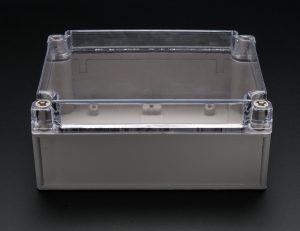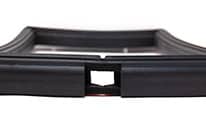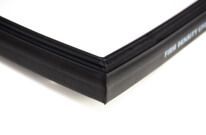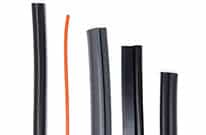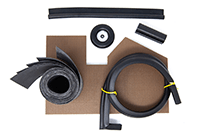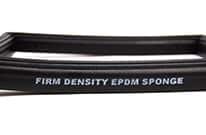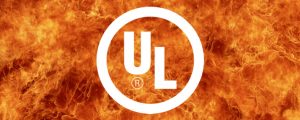 Learn how UL 94 flame ratings for solid plastics can help part manufacturers select the right materials for flame resistance.
Learn how UL 94 flame ratings for solid plastics can help part manufacturers select the right materials for flame resistance.
Doug Sharpe
President of Elasto Proxy
Do you need plastic parts made from materials with UL 94 flame ratings? How well do you understand this flammability standard, and how can you be sure you’re selecting the solid plastics that you really need? For starters, here are few facts to consider.
- Underwriters Laboratories (UL) doesn’t specify a single UL 94 flame rating.
- There are different flame ratings for solid plastics, thin materials, and foamed materials.
- There are different ratings depending on a burn specimen’s orientation (horizontal or vertical).
- Not all plastics that meet the requirements of a UL 94 rating have been certified by UL.
Technical buyers and product designers don’t need to be UL 94 experts, but it’s important to understand some basics during compound selection.
UL 94 Flame Ratings for Solid Plastics
UL 94 is a flame rating that groups materials into categories based on their flammability characteristics. Plastics are tested according to UL-defined procedures under laboratory conditions, and the test results can help you to determine the suitability of a material for your application. It’s important to note that UL-94 is designed to measure the flammability of plastics used in devices and appliances. Other standards, such as ASTM E84, apply to polymeric materials used in building and construction applications instead.
UL 94 is a single standard, but it contains multiple ratings for solid plastic materials.
- UL 94 HB
- UL 94 V (V-0, V-1, and V-2)
- UL 94 5V (5VA, 5VB)
What do the HB and V designations mean? The HB indicates that the rating is for the horizontal burning of test specimens. The V indicates that the rating is for vertical burning. As you can see from the bulleted list above, there’s more than one vertical rating. That’s because UL 94 has multiple vertical-burn testing standards, each with their own requirements. To learn how each test for solid plastics is performed, visit the UL Prospector website and follow the links for the flammability ratings.
UL 94 Flammability and Your Application
Solid plastics with a UL 94 HB rating are less flame-resistant than materials than meet UL 94’s vertical burning standards. Generally, UL’s horizontal burn rating is considered to be the easiest of all the UL flame ratings for a supplier to achieve. Depending on your application, however, UL 94 HB plastics may be just what you need. Typically, these materials are used in portable, attended enclosures for devices or appliances that see intermittent, light-duty use. Hair dryers and calculators are examples.
The UL 94 V rating is more demanding than UL 94 HB, but is also used with consumer goods (such as coffee makers). UL 94’s V-0, V-1, and V-2 ratings are different because each specifies a different total combustion time for five specimens under total flaming conditions. Importantly, plastic materials that meet the requirements of V-0 and V1 will not cause flaming drips to ignite surgical cotton, a material that’s used in medical, sanitary, and hygienic applications.
UL 94 5V is another vertical burn rating, but it’s more demanding than UL-94. As the highest UL 94 flame rating for solid plastics, UL 94 5V tests are performed on materials used in fixed enclosures for electrical equipment. UL 95 5V is for plastics that are already UL 94 V-0 rated, but that’s not the end of the story. UL 94 5VA is stricter than UL 94 5VB because with UL 94 5VA, plaque specimens may not exhibit burn-through. Here, plaque refers to deposits from the plastic that have dripped onto surgical cotton.
How Can We Help You?
Do you have questions about UL 94 flame ratings for solid plastic parts? Would you like to learn about UL 94 flammability ratings for thin materials and foamed materials, or discuss whether you need plastics that are UL-certified or that meet a manufacturer’s own testing requirements under UL 94? Future blog entries will address these topics, but we’re ready to help you now.
Elasto Proxy is a custom fabricator and not a plastics producer, but our solutions providers can help you to source the right materials for your application. For over 25 years, we’ve helping solved sealing and insulation challenges in a wide variety of industries. Contact us for more information, and enjoy this short video about UL flame ratings for solid plastic parts.

